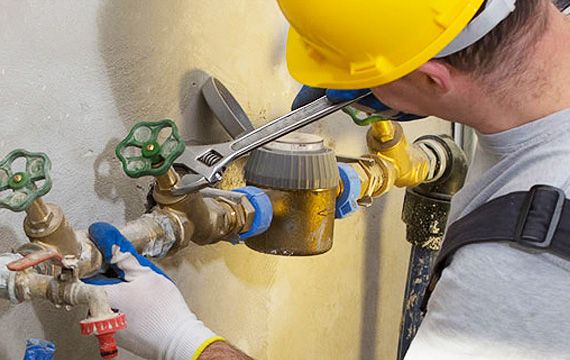Uncovering Plumbing Essentials: What Is the Most Common Plumbing Repair and How to Handle It?
Introduction
Plumbing is one of those home aspects that we often take for granted—until something goes awry. When you turn on the faucet, flush the toilet, or run the dishwasher, you're relying on a complex network of pipes and fixtures to work seamlessly. But what happens when that seamless flow turns into a gurgle or a drip?
In this comprehensive guide, we're diving deep into plumbing essentials, focusing on the most common plumbing repair: leaky faucets. We'll explore why they occur, how to handle them effectively, and when to call in a professional plumber near me. So if you're ready to roll up your sleeves and tackle some plumbing woes, let’s get started!
Uncovering Plumbing Essentials: What Is the Most Common Plumbing Repair and How to Handle It?
When we talk about plumbing issues at home, leaky faucets reign supreme as one of the most common repairs homeowners encounter. According to various studies, a dripping faucet can waste more than 3,000 gallons of water annually—an environmental concern as much as it is a financial one.
Understanding Leaky Faucets
A leaky faucet is not just an annoying nuisance; it’s also a sign that something isn’t right within your plumbing system. Often caused by worn-out washers, corroded valve seats, or faulty O-rings, these leaks can lead to larger problems if left unchecked.
- Worn-out washers
- Corroded valve seats
- Faulty O-rings
- Prevent water waste
- Avoid higher utility bills
- Maintain home value
Identifying the Type of Faucet
Before you can fix your leaky faucet, it’s essential to identify which type you have. The most common types include:
- Compression Faucets: These use rubber washers and are known for their simple mechanics.
- Ball Faucets: Found in single-handle designs, these utilize a rotating ball mechanism.
- Cartridge Faucets: These feature cartridges instead of washers and offer smooth operation.
- Ceramic Disc Faucets: Known for their durability and reliability due to ceramic disc technology.
Each type has its unique characteristics and methods for repair.
Gathering Tools for Your DIY Repair
If you’re feeling handy and want to tackle that leaky faucet yourself, you’ll need some basic tools:
| Tool | Purpose | |------------------|-----------------------------------------| | Adjustable Wrench | To loosen and tighten nuts | | Screwdriver | For removing screws | | Plumber's Tape | To seal threaded connections | | Replacement Parts | Washers, O-rings, or cartridges |

Step-by-Step Guide to Fixing Your Leaky Faucet
Now that you’ve identified your faucet style and gathered your tools, let's dive into the repair process:
Turn Off the Water Supply: This is crucial! Locate the shut-off valves under your sink.
Plug the Drain: To prevent losing small parts down the drain.
Disassemble the Faucet: Use your screwdriver and wrench carefully.
Inspect Parts: Check for wear and tear on washers or cartridges; replace them if necessary.
Reassemble: Follow reverse order while ensuring all parts fit snugly.

Turn On Water Supply: Slowly turn on your water supply while checking for leaks.
Test Your Repair: Run water through the faucet briefly while observing for any drips.
When to Call in Professional Help?
Despite your best efforts, sometimes it’s best to call in a professional plumber near me. If you https://www.gottfriedplumbing.com/helotes-tx/ encounter any of these issues:
- Persistent leaks after repairs
- Low water pressure
- Signs of water damage around fixtures
- Difficulty disassembling components
The Importance of Regular Maintenance
Regular maintenance can significantly reduce the likelihood of plumbing problems arising in the first place.
Routine Inspections
Conducting periodic inspections can help catch minor issues before they become major headaches.
Cleaning Drains Thoroughly
Clogged drains are another common issue homeowners face; regular cleaning can alleviate this problem.
FAQs
1. How do I know if my faucet needs replacing instead of repairing?
If multiple repairs have been made without success or if there are significant signs of corrosion or damage.
2. Can I fix a leak myself?
Absolutely! Many leaks are straightforward fixes requiring minimal tools.
3. What should I do if my faucet continues leaking after repairs?
Consider consulting with a professional plumber near me to diagnose potential underlying issues.
4. Are there eco-friendly solutions for fixing leaks?
Yes! Opting for high-efficiency fixtures can minimize future leaks while saving water.
5. How often should I check my plumbing fixtures?
A thorough inspection every six months is ideal; however, keep an eye on them throughout the year!
6. What’s better—DIY repairs or calling a pro?
It depends on confidence level; simple fixes are great DIY projects but complex problems require expertise!
Conclusion
In summary, plumbing essentials like understanding common repairs play an essential role in maintaining both our homes and our peace of mind! A leaky faucet may seem minor at first glance but addressing it promptly can save you from larger headaches down the road—both financially and environmentally speaking.
Whether you're choosing DIY methods or seeking out a local plumber near me for assistance, being informed empowers you to make better decisions regarding home maintenance! So next time that drip-drip-drip gets on your nerves, remember you've got options—and now you've got knowledge!
By following this guide on uncovering plumbing essentials regarding common repairs like leaky faucets—with actionable steps—you’re well-equipped not only to tackle this pesky problem but also gain confidence in managing future plumbing challenges!